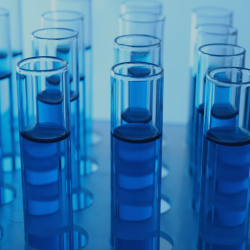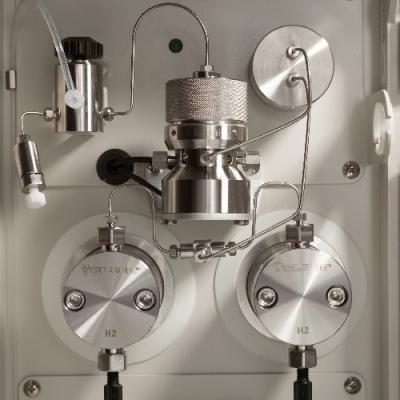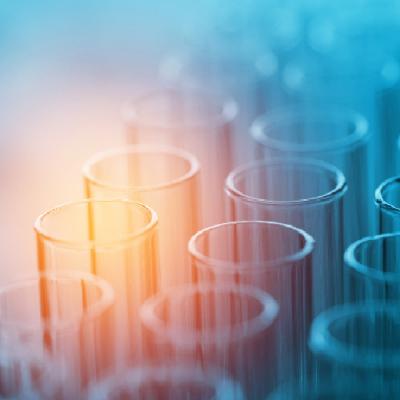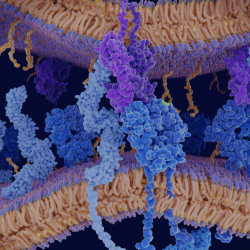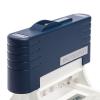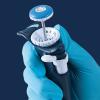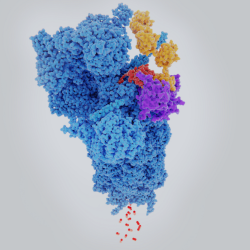Fractionation, or the separation of a mixture of molecules into different parts or “fractions,” helps scientists understand and/or use a complex solution. Collecting and isolating individual fractions from a mixture can enable many downstream applications as specific molecules can be separated based on physical and chemical properties (ex: size, charge, polarity, etc.).
Applications that Use Fraction Collection
Fraction collection requires a flow managed by gravity, pump, or pressurization. Fraction collectors are often integrated with chromatographic purification/separation systems (HPLC, LC/MS, or flash chromatography). Molecules are separated, and analytes of interest are collected as they flow out of the stationary phase. These applications include:
1. Purifying molecules of interest. When purifying proteins, peptides, oligonucleotides, or other molecules, fractionation separates molecules of interest from side reaction products such as modified forms of the proteins, truncated oligonucleotides, lipids, and other small molecules. Collected fractions are then analyzed to identify those that contain the molecule of interest for further processes in the workflow (ex: evaporation).
2. Removing specific contaminant(s). For residue analysis from environmental, food, or tissue samples, gel permeation chromatography (GPC) is used to separate contaminants that may interfere with residue analysis. As the solution exits the GPC column, only the fraction containing the family of analytes of interest is isolated for further analysis. The contaminants that can harm the analytical equipment are discarded.
3. Simplifying complex mixtures:The fractionation of complex samples such as natural product extracts are required for metabolomics studies as no unique analytical platform can analyze all metabolites simultaneously due to their extreme complexity and huge chemical diversity.
Aside from being used after chromatographic separation, a fraction collector can be used as a standalone instrument. They are important in many applications where precise fractionation and collection are required. These applications include:
4. Automated dispensing. While not collecting fractions per se, fraction collectors can be used to automate the aliquoting of various samples and solutions. For example, some COVID-19 testing requires placing sample swabs in a tube of viral transport media (VTM). Because of the high volume of tests needed, Gilson’s FC204 Fraction Collector was used alongside the MINIPULS® 3 Peristaltic Pump to automate filling tubes with VTM.
5. Bioprocess monitoring. During upstream bioprocessing, fraction collectors retrieve samples at specific time points during cell culture so that cell density, metabolite production, or protein expression can be monitored over time.
6. In vivo sampling. In in vivo sampling, samples (ex: blood) are collected from live organisms and then fractionated for analysis. These methods can be useful in understanding the pharmacokinetics of a drug or the metabolic profile of an organism under specific conditions.
Tech Note: Optimized Fraction Collection for Prep HPLC
In this technical note, we highlight how our software and products help you add extra dimensions to your fraction collection possibilities allowing you to set conditions according to specific requirements for synthetic compound purification.
Read Tech Note
Fraction Collection Parameters
Each application requires different collection parameters so it’s beneficial to use a fraction collector that can adapt to many situations, is efficient, low cost, and has a small footprint. Routine analysis where you know the retention time of your molecule of interest after HPLC can benefit from time-based collection as it is predictable when the molecule will come off the column. However, there is a risk that this time shifts so you can collect based on peak threshold or slope if your system includes a detector. Below we examine some common fraction collection parameters to consider, including fraction size and collection mode.
1. Fraction Size and Number of Fractions
In determining your fraction size, consider your priorities: is it more important to maximize yield or purity? Choosing the fraction size is a balancing act between collecting large fractions, which favor yield, and smaller fractions, which favor purity.
Additionally, the fraction size can impact throughput. Collecting large fractions means there are fewer fractions to analyze but could sacrifice purity as multiple peaks could be collected together. Collecting small fractions gives you a better chance of separating closely eluting molecules, but there will be more fractions to analyze. More information about the tradeoffs between purity, yield, and throughput can be found here.
Lastly, the number of fractions collected is also affected by flow rate, where a high flow rate results in a larger number of fractions. Therefore, it’s important to consider the fraction collector’s capacity when choosing equipment.
2. Fraction Collection Modes
Fraction collectors can be programmed to collect fractions based on different parameters. These parameters can be set on the fraction collector itself or as part of a chromatography system.
- Time-based: Time-based methods collect fractions based on duration. It is the simplest collection mode but can result in tubes overfilling if the flow rate changes over time.
- Drop-based: Drop-based collection isolates fractions based on the drop count (or volume). Here, the user can specify the number of drops per fraction.
- Time-windows-based: Time-window-based methods collect fractions at predefined intervals of time. This method is simple and predictable if your molecule of interest has a reproducible retention time. If not, you may miss collecting the peak and/or collect at the wrong time.
- Peak-based: Peak-based fraction collecting is based on real-time information from a detector. To use a peak-based collection method, it’s necessary to set an upper and lower signal threshold for when to start and stop collecting. It’s also possible to use the slope of a peak as the trigger for collection. If a purer, more concentrated sample is required, collection would occur above a more stringent threshold. The stricter threshold requirements typically result in a smaller volume collected. If some contamination is tolerable, then you can set the threshold for collection lower so that you recover more volume per fraction. Peak-based collection methods are well suited when the sample has a varied elution time or if the sample composition is unknown. Peak-based collections need to account for a time delay between when the sample is present in the detector flow cell and when it flows out of the collector.
- Conditional: Conditional fraction collection is based on real-time information from multiple detector signals. The collection will be activated by logical (AND, OR,…) comparison of the different information. This mode is only possible in systems controlled by software such as the TRILUTION® LC Software.
3. Automated vs. Manual Collection
Fraction collection can be done manually or the entire process can be automated. Manual collection can be used for routine collection of fractions at known time points. However, this method is low throughput, imprecise, and requires hands-on time.
Automated fraction collection is high throughput, frees up the user for other tasks, and provides advanced mode such as slope to collect higher purity fractions directly after HPLC without manual intervention.
Fraction Collectors at Gilson
At Gilson, our fraction collectors are adaptable to many situations to increase your lab’s efficiency, lower instrument footprint in the lab, and reduce costs. Both of our fraction collectors, FC 203B Fraction Collector (smaller capacity) and FC 204 Fraction Collector (larger capacity), are flexible with multiple collection parameters, support automated and manual collection, are amenable to different collection vessels and volumes, have up to 10 time windows, and allow you to collect only what you want when you want. Both fraction collectors can be used with our TRILUTION® LC Software as part of a purification system or standalone with most LC systems.
| Number of Fractions |
105 tubes 13x100mm, or 1 microplate |
105 tubes 13x100mm, or 1 microplate |
240 tubes 13x100mm, or 8 microplates |
240 tubes 13x100mm, 8 microplates |
| Maximum Flow Rate |
200 mL/min |
20 mL/min |
20 mL/min |
200 mL/min |
| Multiple Time Collection Windows |
No |
Yes |
Yes |
Yes |
| Maximum Number of Channels |
8 |
8 |
18 |
18 |
Maximize Purity, Yield, and Throughput with Improved Fraction Collection
Liquid chromatography (LC) is the standard method used for purifying products in the discovery stages, as it is cost-effective, relatively simple to perform, and reliable. However, obtaining high purity and yield using this approach often comes at the cost of throughput, This article explores how users can enhance fraction collection efficiency and streamline the purification process by using the latest advances.
LEARN MORE

















